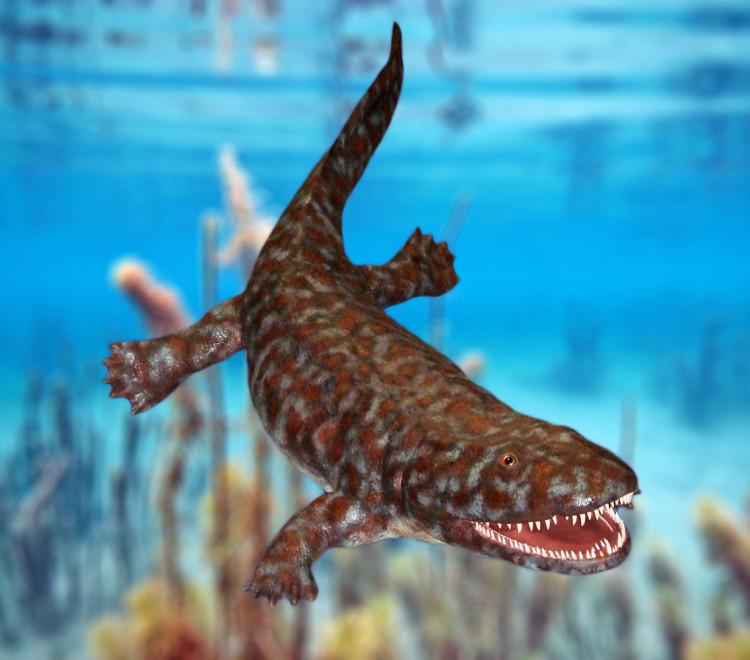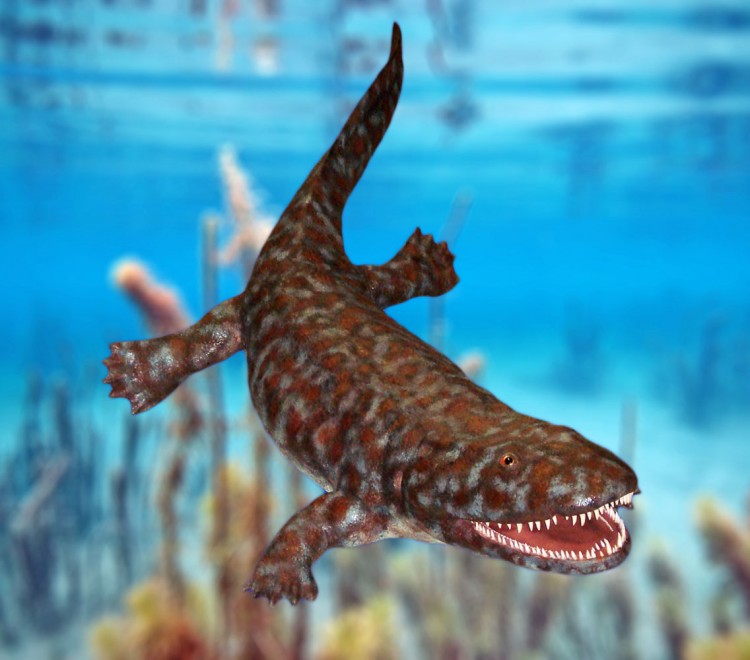The first animal thought to have walked on land actually just dragged itself along like a mudskipper, according to new UK research published in Nature on May 23.
Using scans of fossils of the 360-million-year old tetrapod Ichthyostega, researchers from The Royal Veterinary College (RVC) in London and University of Cambridge created a digital 3-D model of the animal’s skeleton.
Ichthyostega was about 1.5 meters long (about 5 feet long), with four limbs and a finned tail. It inhabited what is now Greenland during the Late Devonian period. First discovered in the 1930s, Ichthyostega became an iconic fossil for representing the supposed “missing link” between fish and land animals.
“Our reconstruction demonstrates that the old idea, often seen in popular books and museum displays, of Ichthyostega looking and walking like a large salamander, with four sturdy legs, is incorrect,” said study co-author Jennifer Clack of the University of Cambridge in a press release.
Using the model to investigate the range of joint movements possible, they discovered Ichthyostega wouldn’t have been able to rotate its hips and shoulder joints to enable walking. It also couldn’t push its body off the ground and move each limb in turn—an essential set of movements for locomotion on land.
Instead, the researchers think the animal probably occasionally hauled itself out of the water with its front limbs, using its back flipper-like limbs for balance.
“These early tetrapods probably moved in a similar way to living mudskipper fishes in which the front fins, or arms, are used like crutches to haul the body up and forward,” said study lead author Stephanie Pierce of RVC and University of Cambridge in the release.
The team also made similar models of a seal, salamander, platypus, crocodile, and otter to check the model accurately reproduced joint movements.
While the study answers some questions, others are created. “Remarkably, earlier fishes (called tetrapodomorphs) had the ability to rotate their fins,” said study co-author John Hutchinson of RVC in the release. So why Ichthyostega had such restricted limb movements remains a mystery.
Ichthyostega-like tetrapods were also thought to have been the creators of footprints found in 400-million-year-old rocks in Poland. Now, it seems likely another unknown four-legged creature must have made them, concluded the researchers.
The Epoch Times publishes in 35 countries and in 19 languages. Subscribe to our e-newsletter.





